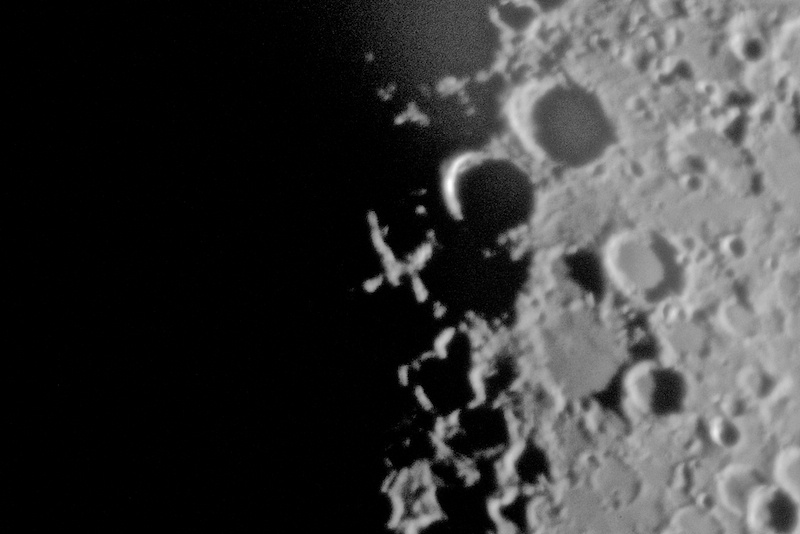
Venus, Lunar X
Posted: 28 May 2012
The wind was calmer on Sunday, 27 May, than on recent days. Mostly in the 2-5mph range, but did have some gusts 10-15mph during the day. I opened the observatory at 1801 MST, 95°F. At 1806 MST, I began viewing Venus, 77X and 133X. Crescent was really thin. It will be getting even thinner over the next few evenings as Venus approaches its transit of the Sun. I did some prime focus imaging of Venus with the D7000 DSLR. The seeing was not very good; stacking the HD videos did not improve the image. However, I was able to find a good frame (cropped) in a 1/400sec, ISO 320, video recording made at 1816 MST, over an hour before sunset:

I also did some prime focus + 2X Barlow Lens HD video recordings. Again, a single frame (cropped), made at 1848 MST (30 minutes before sunset), 1/1600sec, ISO 1600, showed the crescent phase the best:

I took this photo using the iPhone 4 showing a "Live View" of Venus at prime focus + 2X Barlow Lens (zoomed in) on the D7000 DSLR camera:

While the D7000 was still mounted on the 8" LX200-ACF, I slewed the telescope to the moon and captured this (cropped) image of the "Lunar X", prime focus + 2X Barlow Lens, "Hat Trick", ISO 200:

I ended imaging at 1938 MST and did some lunar observing, 267X. There were some fascinating views this evening.
I then viewed Saturn, 77X. Four moons were visible: Titan, Rhea, Dione, and Tethys. At 1959 MST, I picked up Enceladus at 133X.
Closed the observatory at 2008 MST, 67°F.
Comments are welcome; use the Comments section below, or you can Email Me. Thanks.
Go to the previous report.
Return to the Cassiopeia Observatory Welcome Page.